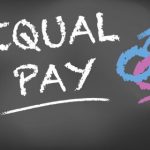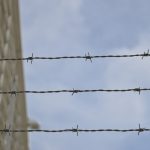Modern Chains: An Interview with Anti-Slavery Australia’s Professor Jennifer Burn

The 2016 Global Slavery Index estimates there are 45.8 million people around the globe currently in some form of modern slavery. While Australia has one of the lowest rates in the world, the index still puts the number of people enslaved in some form in this country at 4,300.
Today, the shackles and marketplace of the traditional slave trade have disappeared. However, these have been replaced by forced labour, control of movement, wage exploitation and forced marriage.
Over recent decades, there’s been a global push to end modern day slavery.
The United Nations Protocol to Prevent, Suppress and Punish Trafficking in Persons, Especially Women and Children came into force in December 2003. Australia ratified the international agreement to put an end to human trafficking in September 2005.
The laws in Australia
Under Australian law slavery is defined as “the condition of a person over whom any or all of the powers attaching to the right of ownership are exercised, including where such a condition results from a debt or contract made by the person.”
The Australian Criminal Code Act 1995 has outlined slavery, slavery-like and trafficking offences, since it was amended back in 1999.
In February 2013, the federal government passed the Crimes Legislation Amendment (Slavery, Slavery-Like Conditions and People Trafficking) Act 2013, which further amended the Criminal Code to include enforced labour and forced marriage, as well as to broaden the definition of servitude.
Over the last ten years, the Australian government has officially recognised 500 victims of slavery. Any reports of this nature are investigated by the Australian federal police (AFP).
A landmark case
In 2008, the High Court of Australia handed down its judgment on Australia’s first slavery case, The Queen v Tang. It involved Melbourne brothel owner Wei Tang and five Thai nationals, who’d been working in her establishment.
Ms Tang’s initial trial involved the first criminal conviction for a slavery offence in Australia, and the High Court upheld her conviction. The case has been dubbed “the most crucial test of the effectiveness of our criminal laws against… slavery ever to come before an Australian court.
The High Court ruling also served to establish the modern legal definition of slavery, which encompasses the exercising of powers attached to the right of ownership over another, the nature and extent of these powers, and a lack of consent from the person these are exercised over.
Establishing a modern anti-slavery act
The 2016 Global Slavery Index notes that 58 percent of the people living in slavery conditions around the globe come from China, Uzbekistan and countries in South Asia. And Australia is a nation that imports consumer goods from some of these countries.
Currently, there’s a Senate Inquiry underway into establishing a Modern Slavery Act in Australia. The act would force businesses to check on their supply chain to ensure that it’s not linked to slavery operations overseas.
Anti-Slavery Australia is a legal research and policy centre based in the Faculty of Law at UTS, which is focused on the abolition of slavery. Sydney Criminal Lawyers® spoke with the director of the centre Professor Jennifer Burn about the current push in this country to end all forms of slavery.
The 2016 Global Slavery Index puts the number of people enslaved in Australia at 4,300.
How are people being enslaved in this country today? And are these situations involving people who were born here or from overseas?
Nobody really knows how many people are in slavery in Australia. We’ve got official statistics. The number of referrals to the AFP. They’ve had 169 referrals in the 2015/16 year. But, undoubtedly, there are more people exploited.
I don’t know whether the Global Slavery Index is correct. But we do know that we don’t have any reliable statistics.
The Australian Criminal Code criminalises slavery, servitude and forced labour, and human trafficking.
It’s absolutely clear that while the offence of human trafficking is essentially a facilitation offence – for bringing people into Australia usually, or for taking them out – the other offences of slavery, servitude and forced labour are conditions of such exploitation that they may affect any person in Australia regardless of status.
So in other words, it could be an Australian citizen, a resident or a backpacker.
The Criminal Code focuses on the conditions against exploitation, and has established a hierarchy of exploitation with slavery being the most egregious criminal offence. It carries a sentence of up to 25 years imprisonment.
The law covers both people trafficking in Australia, and any person in Australia who may be in a condition of exploitation.
On Wednesday, high-up Thai officials were convicted on human trafficking charges in Thailand’s largest trial of its kind. The arrests came after mass graves were discovered in the south of the country, where Rohingya people from Myanmar were being held in shocking conditions.
How does something like human trafficking affect Australia?
It’s a problem in Australia. I think that it is undetected in many cases. And we’re seeing new forms of trafficking that are emerging all the time.
The AFP investigates these cases and the CDPP prosecutes them. There’s been 20 convictions in Australia for slavery, servitude and trafficking offences. But the majority of those convictions are for slavery and servitude.
So far, there haven’t been any convictions for forced labour, which was an offence introduced in March 2013, along with the forced marriage offence.
But we have seen convictions for human trafficking into Australia, but most of the convictions are for slavery and servitude.
And I think that reflects some of the difficulties in evidence gathering and prosecuting if the offence is a facilitation offence – of bringing people into Australia – as then it’s necessary to prove intention.
And it can be difficult to prove intention, when the defendants may have been in a foreign country, where English is not the first language, and material may be in other languages. It’s difficult to prove intent in any situation, but even more so when we’re looking at a foreign country.
Unions NSW just released a report that outlined 80 percent of businesses advertising for jobs in this state on Chinese, Korean and Spanish websites were offering pay rates way below the minimum wage.
How prevalent would you say this sort of exploitation is in Australia? And is this actually classed as a form of slavery?
It’s really concerning to see that there are those websites advertising wages that are in fact illegal in Australia. It’s way below any lawful standard.
The Australian parliament last year issued a report on labour exploitation and called it a national disgrace.
So people are exploited in Australia along the whole spectrum of exploitation, from underpayment of wages, to the breaches of other lawful workplace conditions, and sometimes that exploitation extends into forced labour, or slavery.
This was one of the things that the High Court considered in the case of Tang. The distinction between slavery and harsh employment. It’s a complex question. And really it requires investigating the whole condition of exploitation and control.
In Tang’s case, Gleeson said it was important not to debase the currency of language, and use the term slavery appropriately.
If people are getting underpaid that is a breach of Australian law. It’s a question about whether it would be slavery or forced labour, or potentially human trafficking. And that would depend on a whole lot of other factors.
It could be trafficking in some circumstances. But it’s outrageous, isn’t it? $2.50.
It certainly is. You just mentioned the 2008 High Court case The Queen v Tang.
Can you tell us a bit about what the case entailed? And why it was so significant?
It was the first case that interpreted the slavery offence in the Criminal Code. In that case, the High Court had to distinguish between slavery, and harsh and exploitative employment conditions.
The facts of the case began in 2006 when a jury convicted Wei Tang on five offences of possessing a slave, and five offences of exercising a power of ownership over a slave.
The thing about her case is that she owned a licenced brothel and there were five women that it was alleged she used as slaves. They all travelled from Thailand with the intention of working in the sex industry.
But, Ms Tang created a syndicate of people. She had a 70 percent share in the syndicate. And they effectively purchased four of the women for $20,000 each. And the fifth came to Australia under a different relationship.
The women had limited English. They didn’t have much money. The owners of the brothel kept their passports, and confiscated their return air tickets. Although, they had visas that were lawful on their face value, they were in fact fraudulently obtained.
And they had very large debts that they were required to pay off. The debts were in the order of $45,000. Two of the women paid off their debts in six months.
One of the issues for the court was to look at the restrictions on freedom that these women were subject to, and also the confiscation of their passports.
At the trial, the question for the jury was that while these women weren’t kept under lock and key, were they in fact restricted to the premises?
There’s a very famous quote where Judge McInerney asked how could they run away when they had no money? They had no passport or ticket. They entered on an illegally obtained visa, and were told to avoid immigration. And they had the $45,000 debt.
So this case went to the Court of Appeal, and then to the High Court. And the court decision was handed down by Gleeson. He said that in interpreting what slavery is in Australia there are powers attached to the rights of ownership.
And that’s what the slavery offence in the Criminal Code says. It refers to slavery attaching to the right of ownership. And essentially this refers to the commodification of a person. The using of a person, as if they were a mere object.
He actually said the powers attached to slavery were to use a person for their labour in an unrestricted way to get the benefit of it without paying them appropriately. And the ability to treat them as objects of sale and purchase. Which is what happened in this case.
So it can be difficult to distinguish between slavery and exploitation, but’s it’s more complex than just asking whether somebody is controlled by the other person.
But he did warn us not to overuse the term slavery.
The issue is that the Australian Criminal Code was revised in 2013, and the inclusion of the new offence of forced labour is a really important provision. And while there haven’t been any convictions yet. I think that it’s very clear that there will be more convictions in the future.
And just to look at it empirically, we’re all aware of the almost weekly reports of people who are in exploitation in Australia: in the seasonal harvest trail, in the convenience stores, in private homes.
These cases of exploitation are being identified frequently and will lead to more investigations and prosecutions.
The 2013 amendments, also included forced marriage. My Blue Sky is an Anti-Slavery Australia initiative dedicated to the prevention of forced marriage in this country.
Can you explain what the initiative entails? And how prevalent forced marriage is in Australia at the moment?
Anti-Slavery Australia is based in the Faculty of Law at UTS. We do research and policy. We’ve actually done 10 policy submissions in the last six months.
We got funding after the enactment of the forced marriage provision to create a national legal response to forced marriage in Australia. That allowed us to develop My Blue Sky, which provides access to a secure locker room to any person in Australia who is facing or fearing forced marriage.
Anybody can contact us. But we’ve had close to 40 contacts from people who are facing forced marriage in Australia. And we’ve been able to intervene and prevent forced marriage in some of these cases.
It’s a unique legal service. We’re still evaluating it. And getting opinions about how it can be improved. But already, it’s actually been invaluable.
The usage stats are growing. One of our challenges is to promote the site more effectively throughout Australia. Because on the end of that locker room there is a lawyer who can provide legal advice and representation.
You mentioned that you’ve been contacted by about 40 people so far. What sort of situations are they finding themselves in?
It can include a young person who is frightened of going on a family holiday, because she thinks she is going to be forced into marriage. It can include somebody who has already been married in a marriage they didn’t want.
It could be a neighbour or a friend, who’s concerned about somebody else. It could be an Australian who’s been pressured into sponsoring a partner from overseas through the Australian visa system.
It’s a creative way to address this nationally, and there has been quite a lot of uptake on it.
Having said that, forced marriage is the issue that is dominating the AFP caseload currently. In the report that was issued for the 2015/16 year there were 169 investigations in total, and 69 of those were forced marriage. The others were sexual exploitation, labour exploitation and child trafficking.
Forced marriage is dominating the AFP caseload and it’s a really difficult issue to investigate. In some ways, it’s more analogous to family violence, rather than a slavery offence.
But, it has really challenged all of us who are working in this space.
There are remedies. Obviously, if someone is in a forced marriage, it’s unlikely that they had the ability to form a free and informed consent to the marriage. So that could be an application to the court in order to void the marriage and annul it in effect.
Additionally, under Family Law provisions, if someone is under the age of 18 and they fear that they might be taken outside of Australia for a forced marriage, a court can issue a watch list order preventing them from going.
But there are gaps in the legislative framework that we have been addressing from a policy point of view.
One of the things is that in the context of forced marriage, generally they’re associated with culturally traditional families. And there’s still a number of cases in Australia – and also evidence from the international literature – that people over 18 can be vulnerable too.
So technically, someone over 18 is an adult, and the Family Law jurisdiction cuts out at that stage. The court can’t issue a watch list order for somebody over the age of 18. But, in the context of traditional families there are vulnerable adults who have asked for that kind of protection.
This is one of the areas that is really challenging.
Currently, there’s a Senate Inquiry underway into establishing a Modern Slavery Act in Australia.
In your opinion, how important is it to establish an act like this? And what would you envisage it would entail?
The inquiry is looking at a piece of UK legislation: the Modern Slavery Act 2015. Most of the provisions of the act aren’t relevant to the Australian jurisdiction. But there are two parts of it that are worth looking at.
One is the transparency in supply chain provision, which is in section 54. And the other is the creation of an Anti-Slavery Commissioner position.
Most submissions to the inquiry have focused on those elements, but in particular on the transparency provision.
There’s a couple of different approaches to this. The first is to think about what the UK has done, and consider its effectiveness. And then to think about whether Australia could do something that is better than the UK model.
That’s what we’d say. The UK has done something that Australia could do a lot better.
So this is about stopping Australian businesses from sourcing goods and services from overseas that have links to slavery over there?
There’s a hope for that.
The UK act says that companies that have a gross profit of over £36 million each year are required to produce an anti-trafficking and anti-slavery statement, setting out what they have done in the year to address slavery and trafficking.
It’s a very light touch. They can also report on other things that they’re doing, but the mandatory provision is very light. There’s no effective sanctions on compliance. The UK act just requires companies to put the statement up on their website, so there’s no real systematic auditing of what companies are saying.
We’re saying in the Australian context that it’s a good idea, but it needs to be more effective.
It should be mandatory that companies address any risks in their supply chain. And to do that they have to audit their supply chain and identify where the potential risks are. And then to say what they are doing to address those risks.
And that’s what you’re recommending?
Yeah, that’s what we recommended. Something stronger than the UK tick and flick provision.
As you said, there’s a lot of movement in this space at the moment. The United Nations Protocol came into force in December 2003. You’ve had the amendments to the Criminal Code in 2013. And now, there’s also the Senate inquiry.
What do you think about this focus on modern slavery that’s coming to a head at the moment?
There is a global momentum to address it. And I’m really pleased to see this increased focus on it. I’m really optimistic about what might come out of this focus.
In fact, the Modern Slavery Act inquiry is just one of a number of parliamentary inquiries that are on at the moment.
For instance, there’s one that is currently underway in NSW into human trafficking. There’s one that reported two days ago, the Law Enforcement Committee into human trafficking.
So it’s all happening with a lot focus on policy. And it’s given us the opportunity to address other forms as well.
One important issue is that Anti-Slavery Australia and the Law Council of Australia produced a report on establishing a National Compensation Scheme for victims of human trafficking and slavery.
And in the report that got handed down the day before yesterday the Law Enforcement Committee accepted that recommendation. There was no dissent from any party. It’s a pretty clear recommendation to establish a national compensation scheme.
Additionally, a lot of the focus has been on what companies should do to ensure that they don’t have slavery or forced labour in their supply chain.
But what we’re saying at Anti-Slavery Australia is that the government should step up too, and audit government supply chains to make sure that they don’t have the risks of these human rights abuses.
Professor Burn thanks very much for taking the time out to speak with us today. And continued success with your campaign to end modern slavery in Australia.
Thank you.
Receive all of our articles weekly
Author

Paul Gregoire






